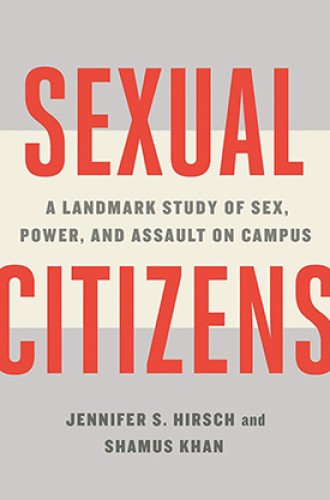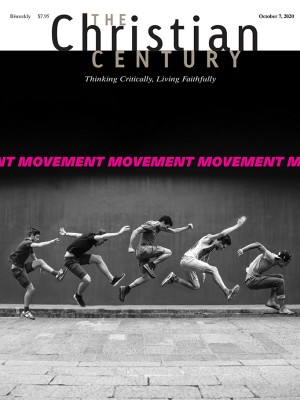Sexual assault is a public health issue
Jennifer Hirsch and Shamus Khan’s study of agency, consent, and sex on college campuses
After liberating this book from the enthusiastic amount of packing tape diligently keeping it safe, I stared at its subtitle, muttered a swear word under my breath, and promptly spent the next five weeks avoiding it. More precisely, I was avoiding the sickened, helpless rage and despair that I assumed I would feel, yet again, while reading about, presumably, a particular brand of young, White, entitled, toxic masculinity.
I was wrong.
The book titles itself as a landmark study, and it’s not kidding. Undertaken over five years at Columbia University, Jennifer Hirsch and Shamus Khan’s study began with nine months of preparation and involved 18 months of research: 1,600 undergraduate surveys, 427 daily diaries kept for 60 days by students, 151 in-depth student interviews, 17 focus groups, various advisory boards meeting weekly, and 600 hours of community and participant field observations. They did their homework.
Read our latest issue or browse back issues.
But the authors point out: “It isn’t just the amount or type of data that makes us different. It’s how we think about the problem.” Hirsch and Khan seek the deep and intertwined social roots of sexual assault, thinking about it as a public health problem rather than a nasty thing individual creepy predators do. Crucially, their goal is to “impel action, but from a position of empathy and understanding, rather than fear.”
The authors introduce their key terms—sexual citizenship, sexual projects, and sexual geographies—at the beginning. A sexual project is the tapestry of reasons a student might engage in sexual activity: pleasure, developing or maintaining a relationship, comfort, gaining status, novelty, and so on. Sexual geographies are the terrain navigated when pursuing or resisting sexual projects: not only the physical space (is the person in their own room, where they feel confident, or in the apartment of a stranger far from campus?) but also the social networks and peer hierarchy that are part of college life.
Sexual citizenship involves the acknowledgment of “one’s own right to sexual self-determination and, importantly, recognizes the equivalent right in others.” To be a sexual citizen is to feel enfranchised, to feel that one has a right to sexual agency, to feel that one’s desire and limits matter and should be heard—and to recognize the same in others.
Hirsch and Khan, both of whom are professors at Columbia, do an excellent job unpacking these technical terms and examining their interactions throughout the narrative of the book. Moreover, they stress the need to be intersectional in our analysis of the social dynamics of sexual assault: race, class, income, orientation, and gender fluidity are as much at play as the usual heteronormative gender binary we assume.
Sexual Citizens is not a dry academic textbook. The authors include the voices and experiences of students, grounding the data in personal, relatable stories. They occasionally mention their personal reactions as they explore the topics that emerge: the realities of dorm life and lack of privacy; the role of alcohol, how it is acquired, and who controls its access; the effects of orientation week training on what consent is and isn’t; the gap between learned knowledge and in-the-flesh behavior; the power of peers and friends in creating and analyzing sexual experiences; the silence around assaults against men and LGBTQ people. All of this creates a comprehensive narrative that radiates with respect, compassion, and appreciation for the participants.
“Our goal is to encourage families and institutions to initiate conversations about what kinds of sexual projects fit with their values,” Hirsch and Khan write. They name parents as their primary intended audience, adding that they also hope to reach young adults and policy makers. But it’s the last group to whom the book feels most aimed. However personal and relatable the style, when it comes to structure, the authors don’t quite sufficiently shake off their academic background.
The book is written methodically and in a linear fashion, examining various factors in several chapters and then drawing conclusions at the end. Imagining myself as a parent, I found myself regularly asking, “OK, but what do I do about this?” There are some helpful suggestions at the end of the book, but the structure is that of a scientific paper. Nonacademic readers would benefit from elements like chapter summaries, key quotes boxed off in the margins, specific questions for parents to ask themselves, and action-based suggestions around each topic.
Where this book succeeds most is in its systemic view of assault. The authors make a compelling case that cultivating sexual citizenship is a community responsibility. As I read, I frequently thought about the current work of antiracism activists in helping us realize that racism is not individual prejudice held by a few bad apples. The recent mass protests against systemic racism show that public conversation and mutual accountability are vital.
Hirsch and Khan sound a clarion call to communities that rear and care for children and youth: we need to recognize and cultivate the sexual citizenship of young people. If we fail not only in comprehensive sex education, write the authors, but also in addressing the question of what sex is actually for, we leave young adults precariously unprepared for navigating sexual questions and projects. Frankly, our job is to get the heck over our embarrassment and discomfort and live up to our responsibilities as adults.
Musing over this as a Christian and future pastor, I thought about the element of baptismal vows that often goes unexplored: the responsibility of the community of faith to the child at the font. Surely it goes beyond being a comforting space or teaching moralistic lessons. Are we not called to teach and model what faith means for our whole lives? If this includes how we vote, how we spend our money, how we talk to each other, and how we treat the planet, then surely it also requires going beyond a discreet silence—or worse, shame—around sexuality.
Hirsch and Khan point us in the direction. It is up to us to press on.
A version of this article appears in the print edition under the title “Sex, students, and power.”







